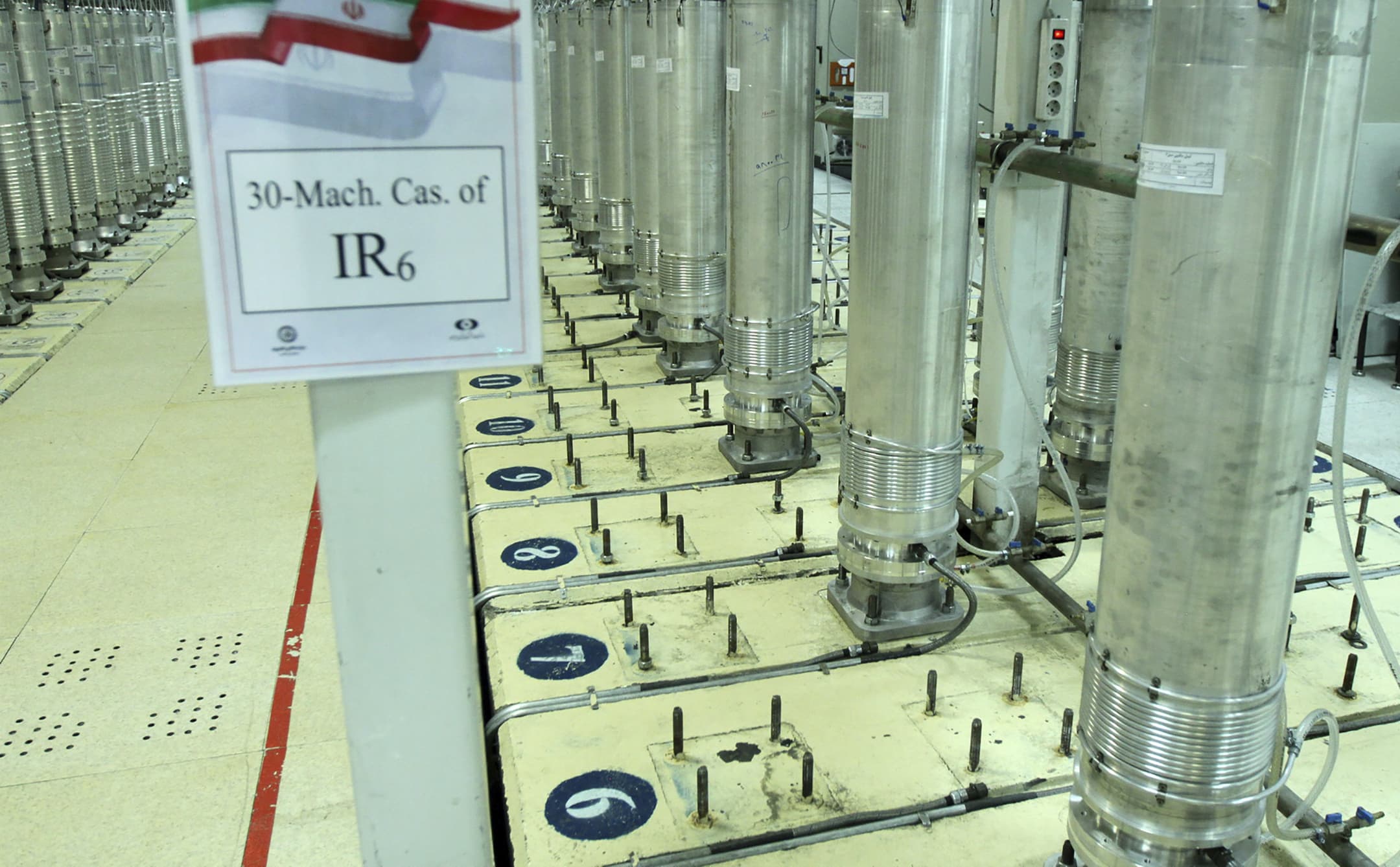

FILE PHOTO: This photo released on Nov. 5, 2019, by the Atomic Energy Organization of Iran shows centrifuge machines in the Natanz uranium enrichment facility in central Iran. (Atomic Energy Organization of Iran via Associated Press, File)
DUBAI, United Arab Emirates — Iran will begin enriching uranium with thousands of advanced centrifuges at its two main nuclear facilities at Fordo and Natanz, the United Nations’ nuclear watchdog said Friday, further raising tensions over Tehran’s program as it enriches at near weapons-grade levels.
The notice from the International Atomic Energy Agency (IAEA) only mentioned Iran enriching uranium with new centrifuges to 5 percent purity, far lower than the 60 percent it currently does — likely signaling that it still wants to negotiate with the West and the incoming administration of President-elect Donald Trump.
Article continues after this advertisementHowever, it remains unclear how Trump will approach Iran once he enters office, particularly as it continues to threaten to attack Israel amid its war on Hamas in the Gaza Strip and just after a ceasefire started in its campaign in Lebanon. Trump withdrew America from the accord in 2018, setting in motion a series of attacks and incidents across the wider Mideast.
FEATURED STORIES GLOBALNATION South Korea scrambles jets as Chinese, Russian warplanes approach GLOBALNATION Insurgents breach Syria's largest city for the first time since 2016 GLOBALNATION PH to conduct medical outreach program in MicronesiaIran’s mission to the United Nations did not respond to a request for comment over the IAEA’s report. Tehran had threatened to rapidly advance its program after the Board of Governors at the IAEA condemned Iran at a meeting in November for failing to cooperate fully with the agency.
In a statement, the IAEA outlined the plans Iran informed it of, which include feeding uranium into some 45 cascades of its advanced IR-2M, IR-4, and IR-6 centrifuges.
Article continues after this advertisementCascades are a group of centrifuges that spin uranium gas together to more quickly enrich the uranium. Each of these advanced classes of centrifuges enrich uranium faster than Iran’s baseline IR-1 centrifuges, which have been the workhorse of the country’s atomic program. The IAEA did not elaborate on how many machines would be in each cascade but Iran has put around 160 centrifuges into a single cascade in the past.
Article continues after this advertisementREAD: Western powers voice ‘serious concern’ at Iran centrifuge plan
Article continues after this advertisementIt’s unclear if Iran has begun feeding the uranium yet into the centrifuges. Tehran so far has been vague about its plans. But starting the enrichment at 5 percent gives Tehran both leverage at negotiations with the West and another way to dial up the pressure if they don’t like what they hear. Weapons-grade levels of enrichment are around 90 percent.
Since the collapse of Iran’s 2015 nuclear deal with world powers following the US’ unilateral withdrawal from the accord in 2018, it has pursued nuclear enrichment just below weapons-grade levels. US intelligence agencies and others assess that Iran has yet to begin a weapons program.
Article continues after this advertisementThe U.S. State Department said in a statement to The Associated Press it was “deeply concerned with Iran’s announcement that it is choosing the path of continued escalation as opposed to cooperation with the IAEA.”
“Iran’s continued production and accumulation of uranium enriched up to 60% has no credible civilian justification,” it added.
Iran, as a signatory to the Treaty on the Non-Proliferation of Nuclear Weapons, has pledged to allow the IAEA to visit its atomic sites to ensure its program is peaceful. Tehran also had agreed to additional oversight from the IAEA as part of the 2015 nuclear deal, which saw sanctions lifted in exchange for drastically limiting its program.
READ: Iran increases stockpile of near weapons-grade uranium – UN
However, for years Iran has curtailed inspectors’ access to sites while also not fully answering questions about other sites where nuclear material has been found in the past after the deal’s collapse.
Iranian officials in recent months, including Supreme Leader Ayatollah Ali Khamenei and reformist President Masoud Pezeshkian, had signaled a willingness to negotiate with the West. But Iran also has launched two attacks on Israel amid the war.
Kazem Gharibabadi, an Iranian diplomat, said in a post on the social platform that he met with EU diplomat Enrique Mora, criticizing Europe as being “self-centered” while having “irresponsible behavior.”
“With regard to the nuclear issue of Iran, Europe has failed to be a serious player due to lack of self-confidence and responsibility,” Gharibabadi wrote.
Subscribe to our daily newsletter
For his partlucky sprite, Mora described having a “frank discussion” with Gharibabadi and another Iranian diplomat. Those talks included “Iran’s military support to Russia that has to stop, the nuclear issue that needs a diplomatic solution, regional tensions (important to avoid further escalation from all sides) and human rights,” he wrote on X.
READ NEXT Iran to enrich uranium with thousands of advanced centrifuges ... Notre Dame Cathedral unveils new interior 5 years after disast... EDITORS' PICK Taal Volcano: Phivolcs detects another phreatic eruption, 4 quakes Marcos: VP Duterte unimportant; impeach rap waste of time Despite scrapped House hearing, VP Duterte still no-show at NBI Shai Gilgeous-Alexander, Thunder eliminate Lakers in NBA Cup Here are some of the best videos from the ‘camera flip’ video trend Is Cebu City a ‘walkable’ city? Netizens respond, expert weighs in MOST READ LIST: Comelec voter education, ACM demo roadshow Dec 2 kick-off areas Neri Naig’s fellow celeb endorser, politicians also face complaints — lawyer South Korea scrambles jets as Chinese, Russian warplanes approach Expanded Centenarian Act to benefit thousands of elderly OFWs Follow @FMangosingINQ on Twitter --> View comments
